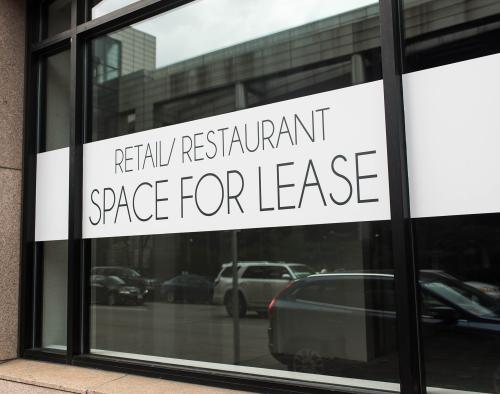Perhaps proximity to the North Pole has its advantages. On December 7, Santa Claus (a.k.a. the Minneapolis City Council) delivered an early holiday gift to Twin Cities urbanists: several key zoning reforms, neatly packaged in an 1100-page comprehensive plan. YIMBYs around the country have been following the pitched battle over the plan’s most revolutionary feature: whether to allow small apartment buildings in neighborhoods currently zoned for only single-family homes. The approved plan would change the allowed residential uses on roughly half the city’s land. But, this is only one of several plan components for zoning reformers to applaud. In this piece, I discuss the strategies through which Minneapolis 2040 aims to improve housing affordability, and what the remaining challenges are toward implementing the plan.
We three goals of zoning reform
To help housing markets work more efficiently and equitably, zoning reform should facilitate three fundamental goals:
1. Build more housing
The only long-term way to reduce housing costs—or at least reduce the rate of housing price growth—is to build more housing. Many single-family neighborhoods claim that they are “built out,” meaning that no additional housing can be constructed—or at least, not under existing zoning. By rezoning lots that currently accommodate only one single-family house to allow duplexes and triplexes, Minneapolis effectively triples the housing capacity of some neighborhoods.
2. Build less expensive housing
Large houses cost more to buy or rent than small houses, conditional on structure quality and location. A 3,000 square foot structure divided into three apartments not only creates more housing units, but each apartment will be cheaper than the single-family house it replaces. Another plan component that helps to lower costs: the plan tackles the sacred cow of requiring developers to provide off-street parking for new houses (often a poison pill for low-cost housing).
3. Build less expensive housing in desirable neighborhoods
The biggest benefit to economic for low and moderate-income households comes from improving affordability in high amenity neighborhoods. Key features of those neighborhoods are proximity to employment centers, public transit stations, low crime, low poverty, and high quality public schools. Minneapolis 2040 puts access to high quality neighborhoods at the center of the plan.
More density is coming to town
Strategies to increase housing density have generally taken two different approaches. One approach substantially increases allowable density in near job centers or around transit stations, while maintaining low density in residential neighborhoods. Arlington, Va. and New York City successfully adopted this strategy, while California’s SB 50 (like last year’s SB 827) will attempt to do this statewide. The second approach allows incrementally more density across large swathes of land, for instance, by permitting accessory dwelling units (ADUs, sometimes called in-law apartments) in single-family neighborhoods. Cities such as Portland, Ore., Washington, D.C., and Vancouver, British Columbia have reduced barriers to ADUs, for incremental gains in housing density.
Adopting a new comprehensive plan is a pragmatic and symbolic step toward a more affordable and equitable housing market.
The Minneapolis 2040 plan pursues both substantial and incremental density increases. This is important, because the strategies are likely to produce different types of housing in different locations—and will benefit different types of households. Upzoning near jobs and transit tends to encourage development of large multifamily buildings with apartments designed for small families (e.g. studios, one, and two-bedroom units). Both location and housing characteristics attract households who prefer shorter commutes over large homes. By contrast, integrating duplexes and triplexes into low-density residential neighborhoods could create more opportunities for low and moderate-income families with children who prefer larger apartments and prioritize neighborhood safety and school quality.
Let them build, let them build, let them build
Adopting a new comprehensive plan is a pragmatic and symbolic step toward a more affordable and equitable housing market. But Minneapolis officials and housing advocates still need to navigate several potential hurdles.
The city must now revise its zoning code to align with the goals stated in the comprehensive plan. Details in zoning rules will affect the financial viability of developing higher density housing. For instance, low height limits and floor-to-area ratios could limit the ability to develop triplexes. (Again, removing off-street parking requirements is a huge victory in lowering development costs.)
Equally important, Minneapolis planners should be wary of codifying procedural requirements that give existing residents—especially in single-family neighborhoods—too much power to oppose unwanted projects under the guise of “protecting neighborhood character”.
Ultimately, how much new housing will be built—and whether that housing is smaller and cheaper than existing homes—depends on the financial returns of redevelopment to landowners. Less restrictive zoning is a necessary but not sufficient condition for building new high-density housing.
O Come, All Ye YIMBYs
Minneapolis 2040 caps a year filled with political energy around housing affordability. And it offers a relatively rare example of success for the YIMBY agenda. As such, activists and leaders across the country should try to understand why pro-housing politics worked in Minneapolis, and how to translate it to other locations. Early observation suggests a few key elements.
- Get the mayor on board. Mayor Jacob Frey has made housing affordability a signature issue, staking his political capital to revising the plan.
- Get outside the NIMBY homeowner bubble. Local planners and neighborhood activists worked to engage with people who don’t normally show up at community meetings, but who will benefit from a more diverse and affordable housing stock.
- Compromise is not a dirty word. A key goal of the plan—and its most controversial element—was to introduce more diversity into single-family neighborhoods. Planners originally proposed allowing apartment buildings with up to four units, but compromised for triplexes in order to gain more political support.
Taking these lessons to heart, the YIMBY movement should add two 2019 New Year’s resolutions: effectively implement the Minneapolis 2040 plan and duplicate its successful political coalition in other cities.







Commentary
Minneapolis 2040: The most wonderful plan of the year
December 12, 2018